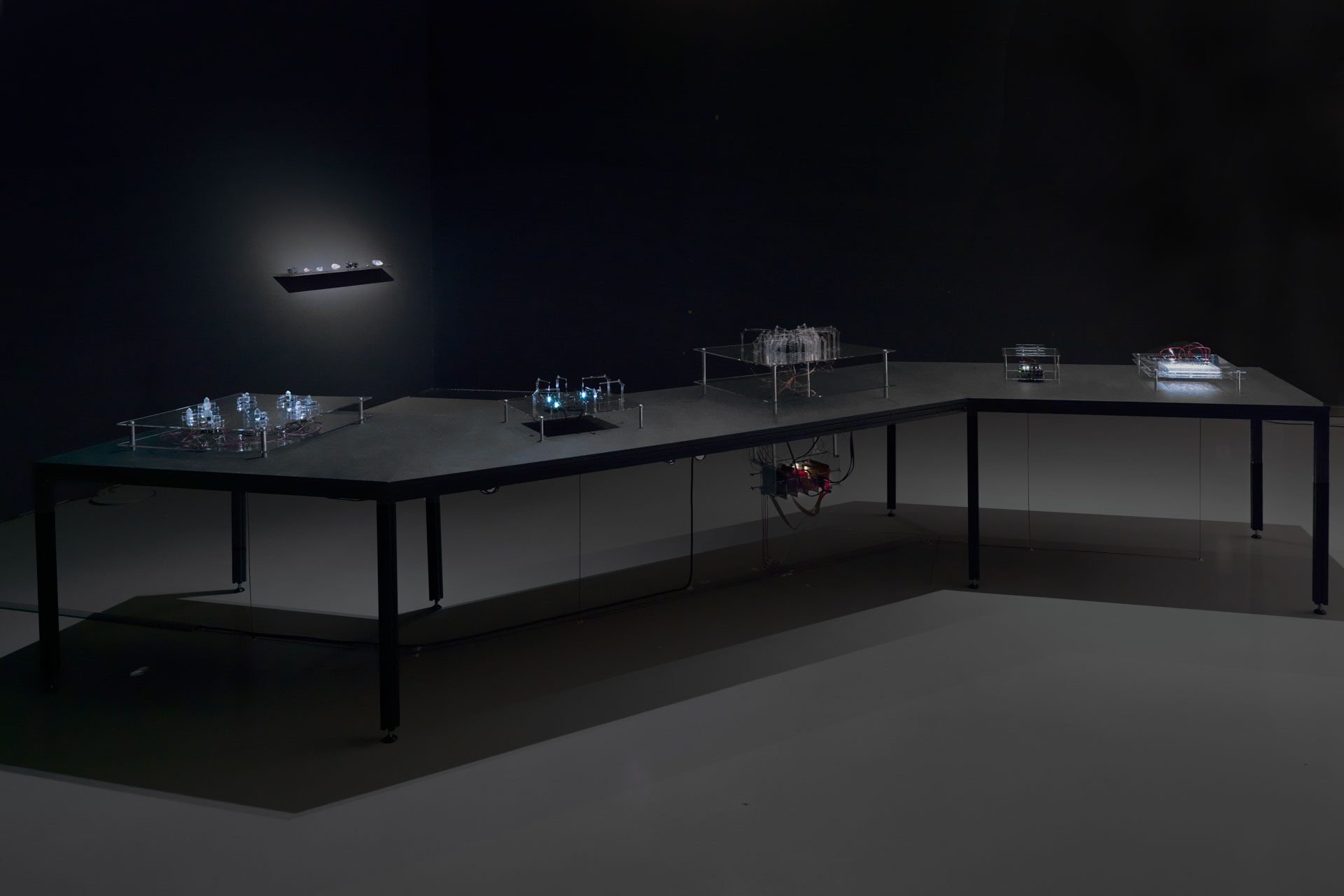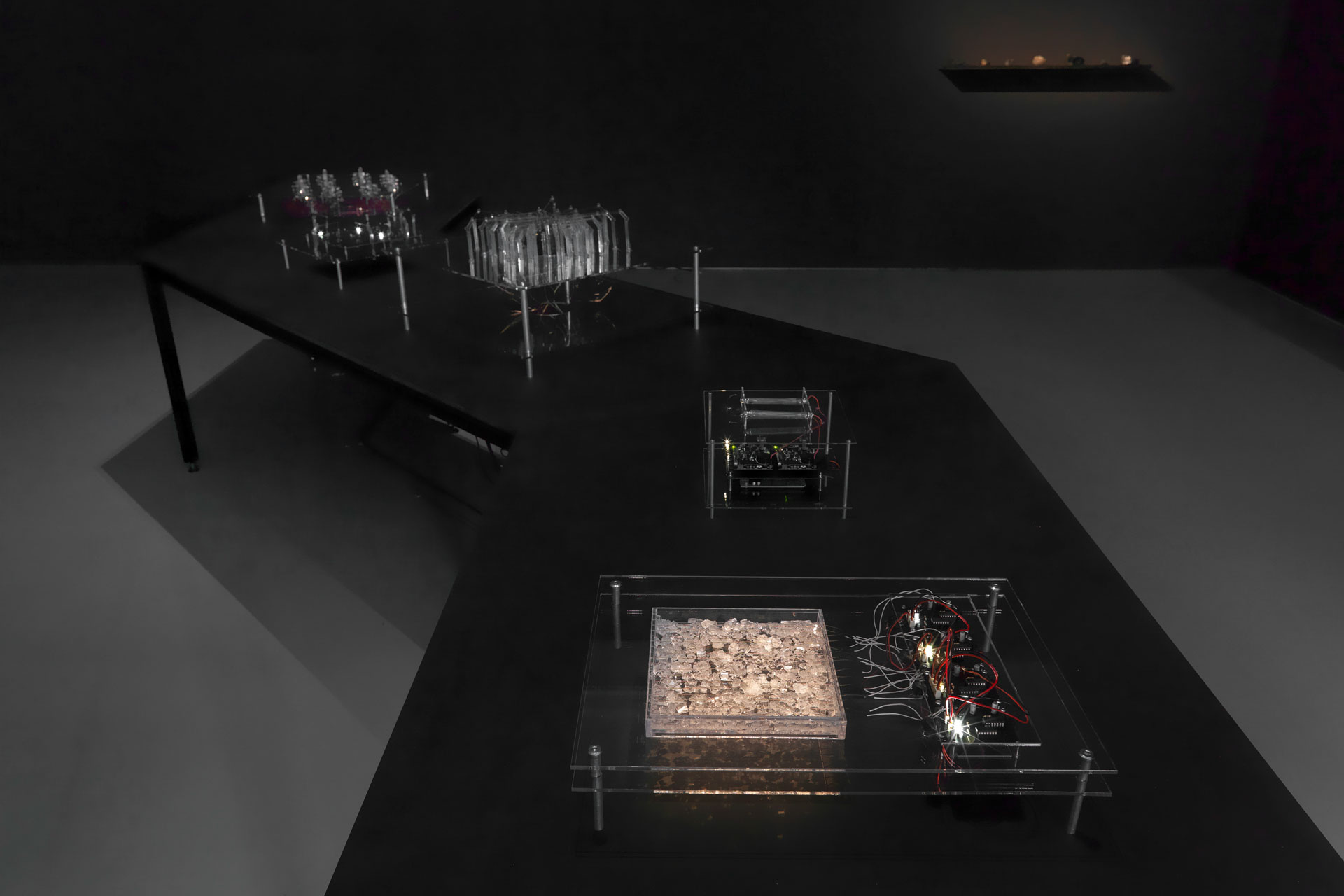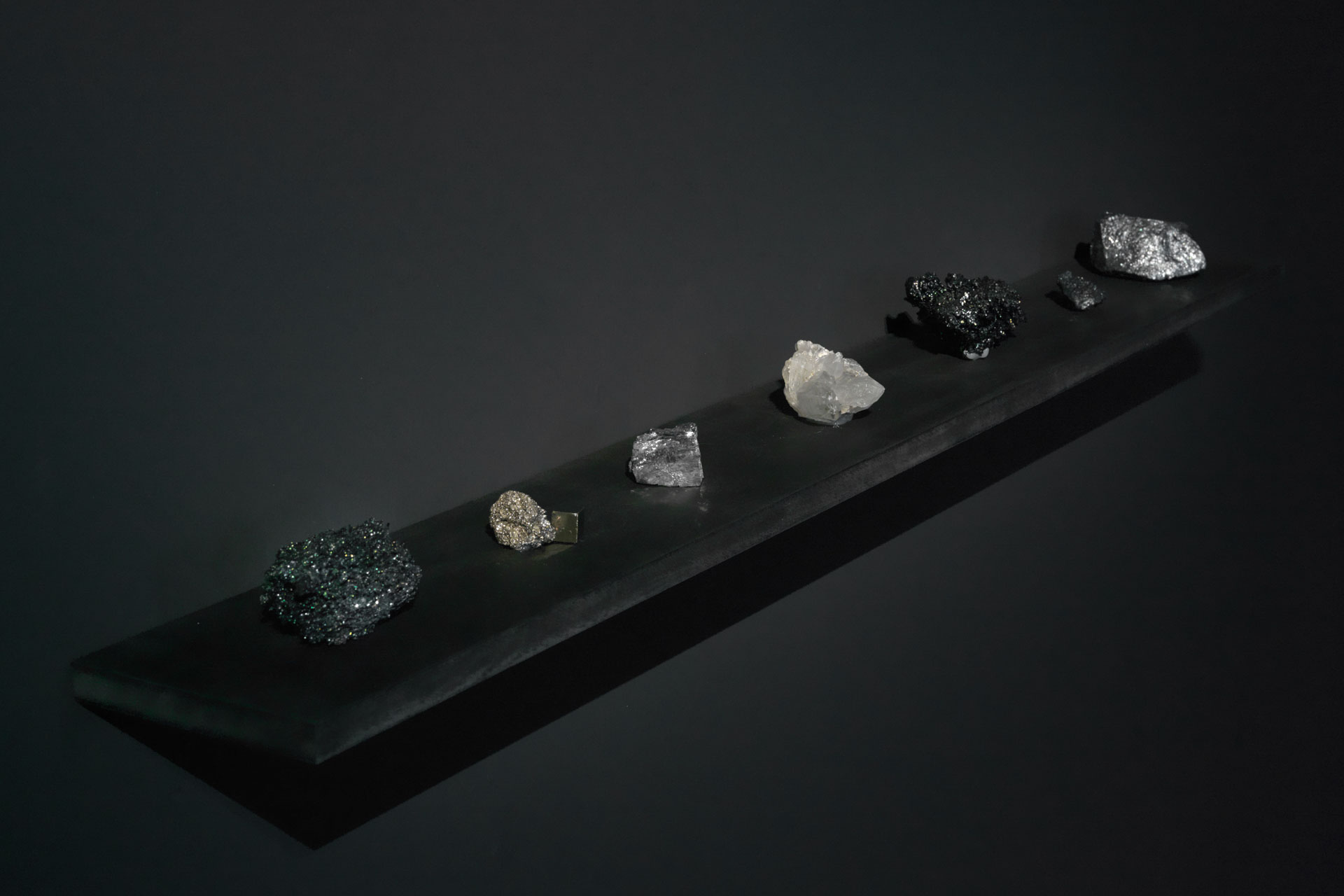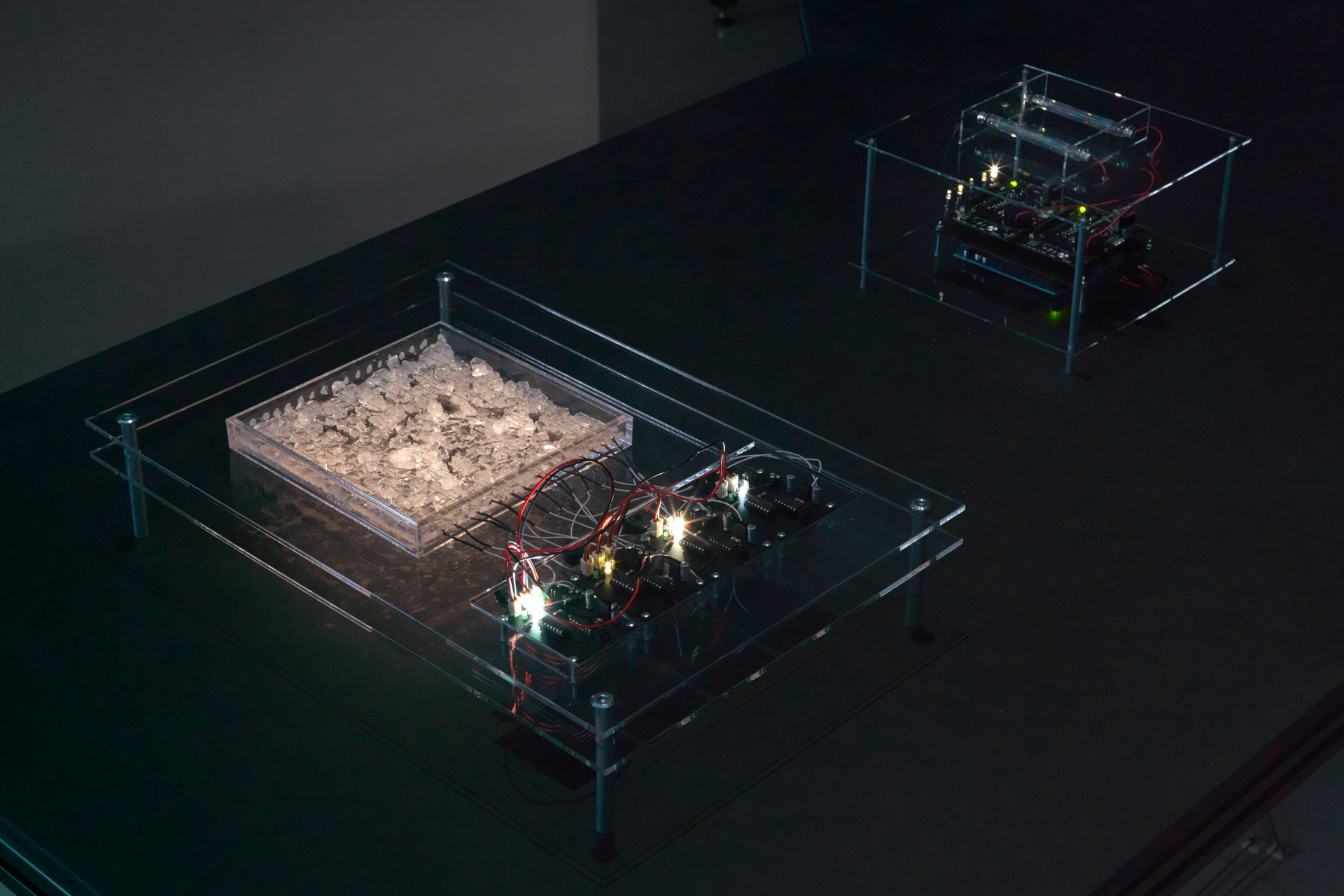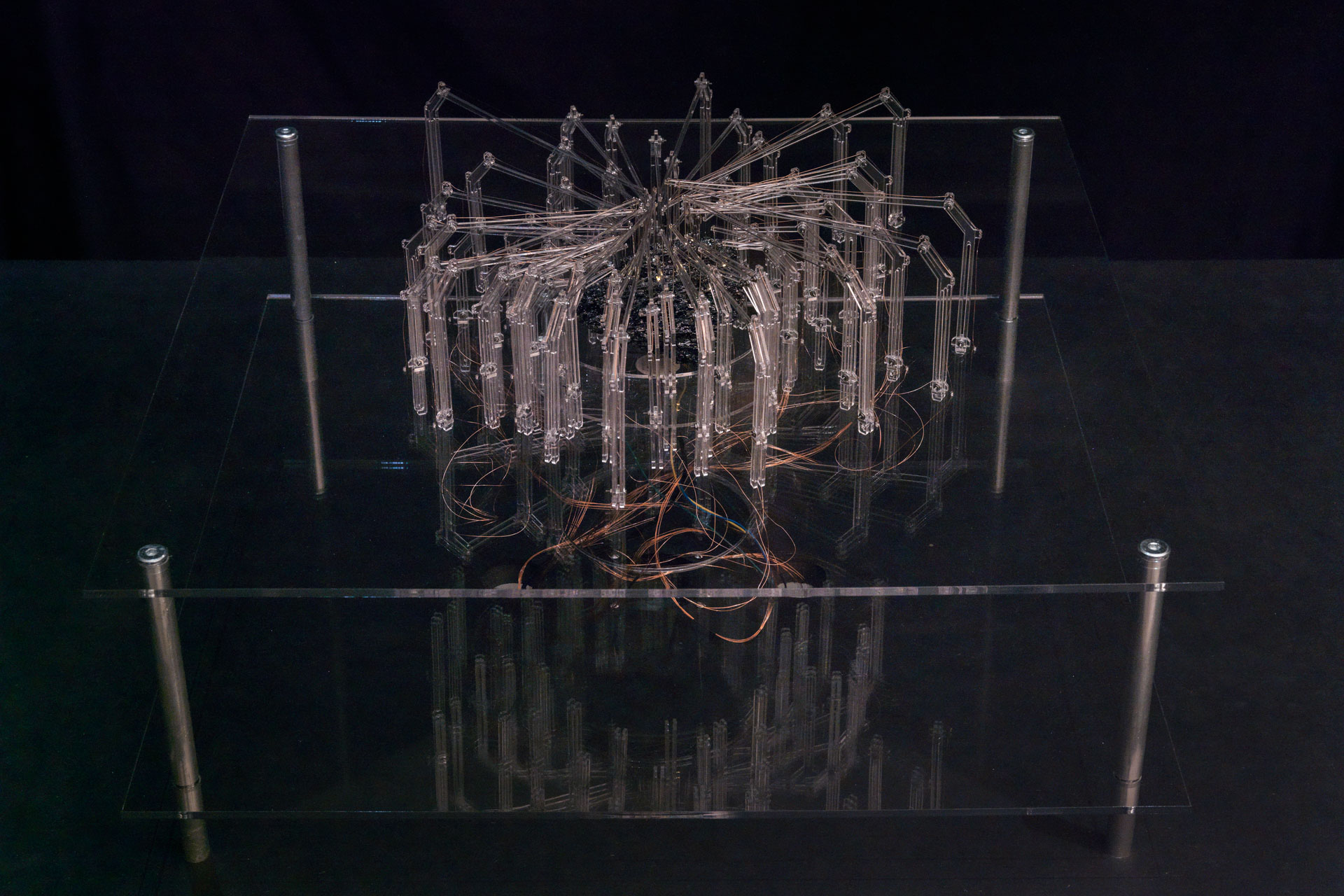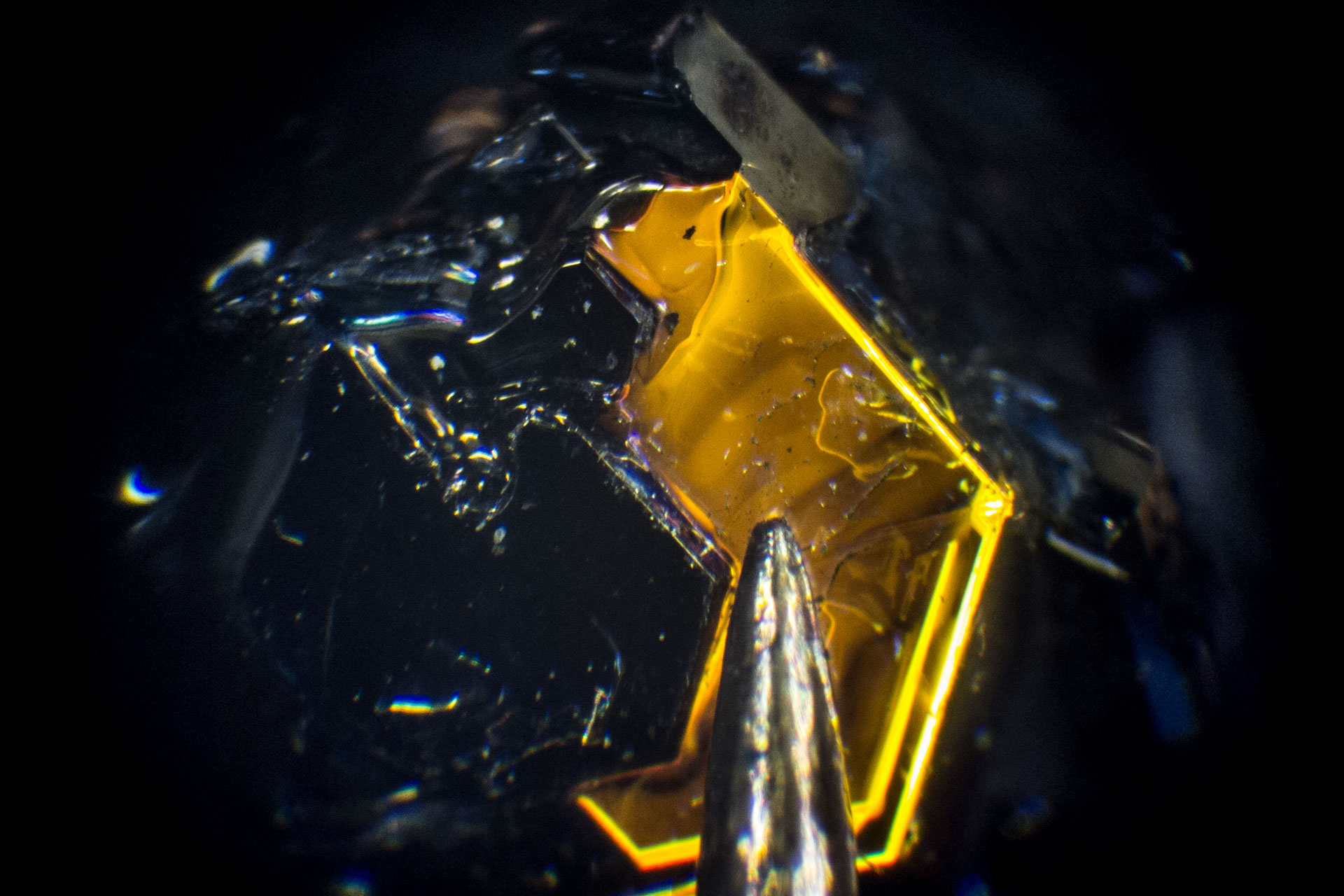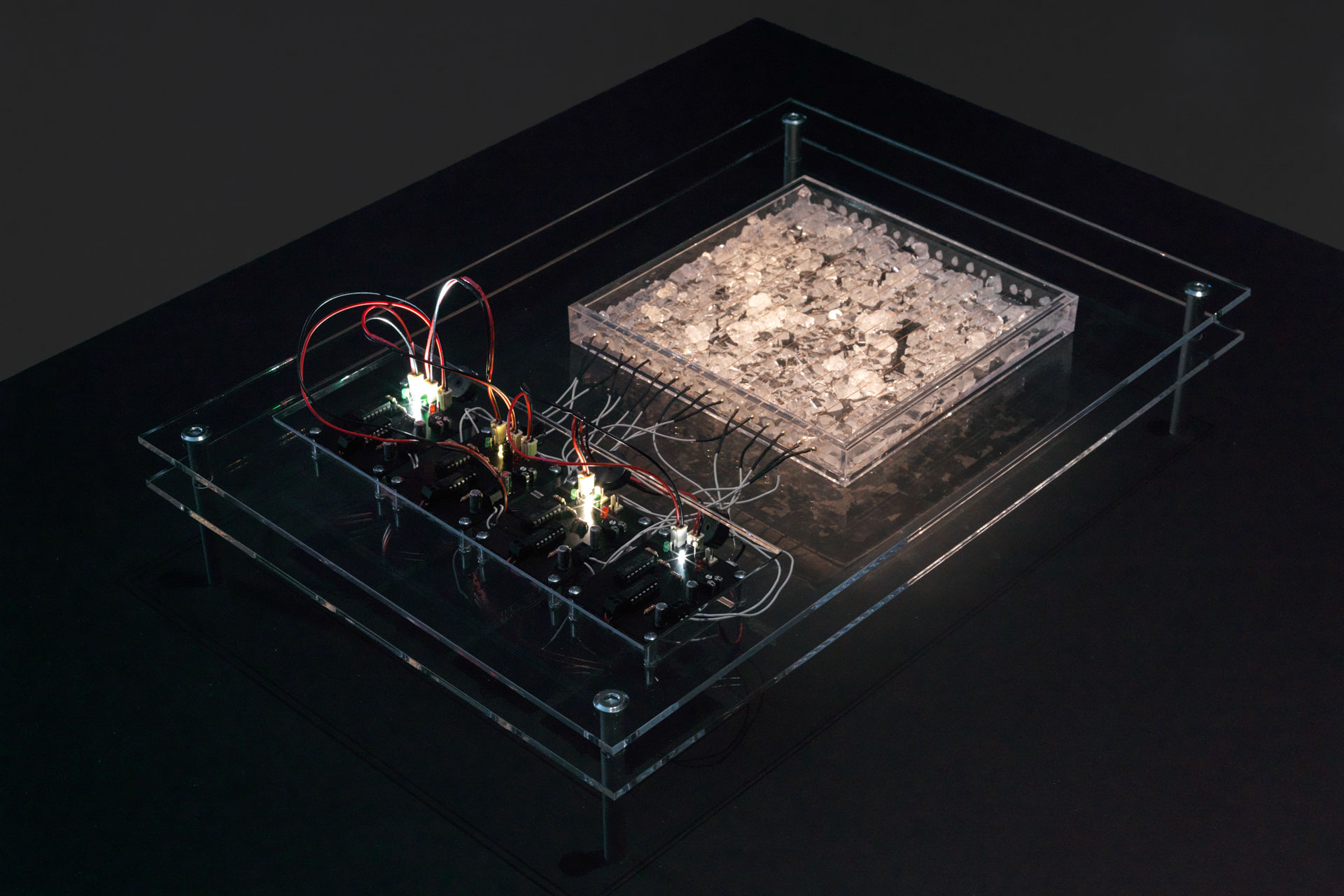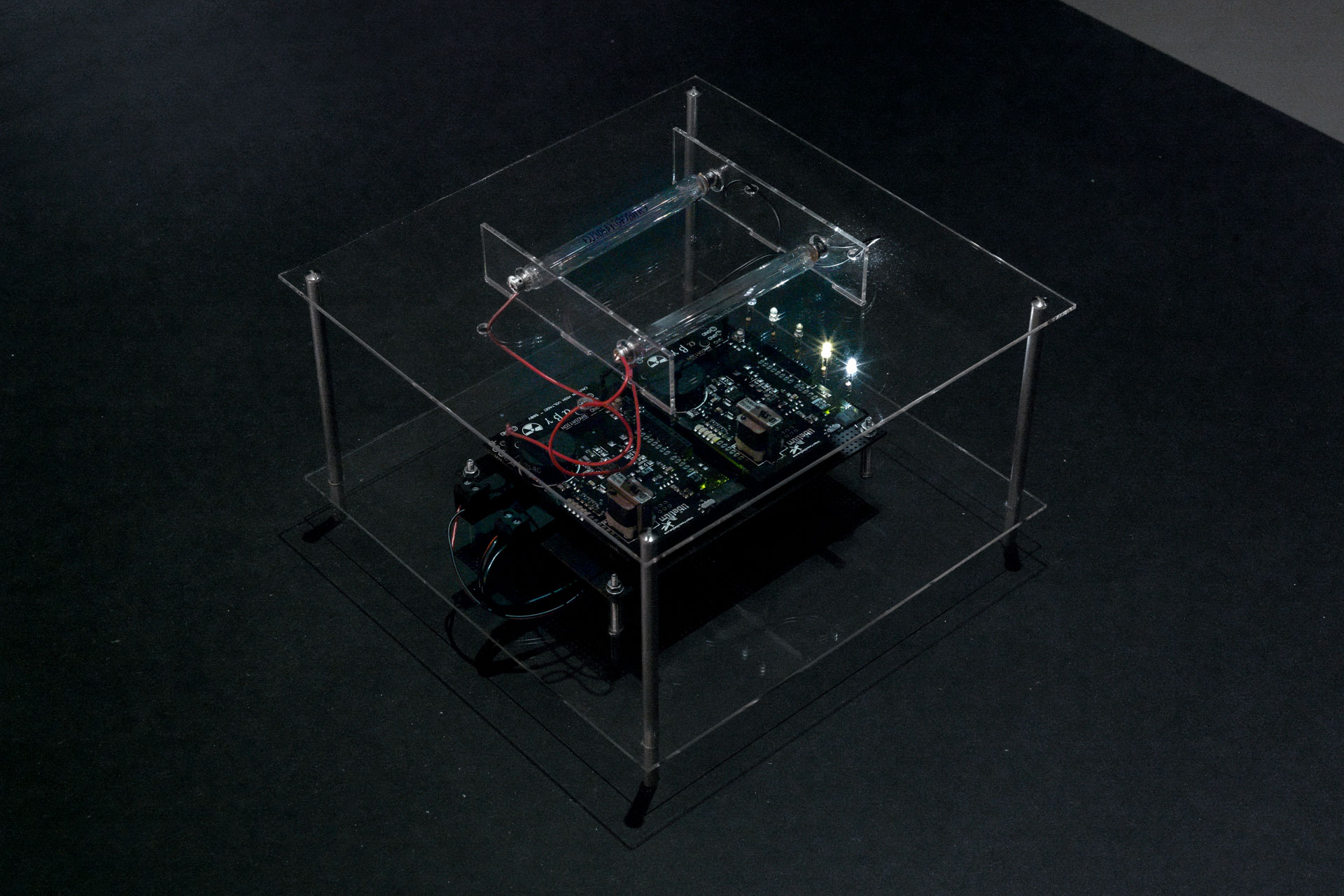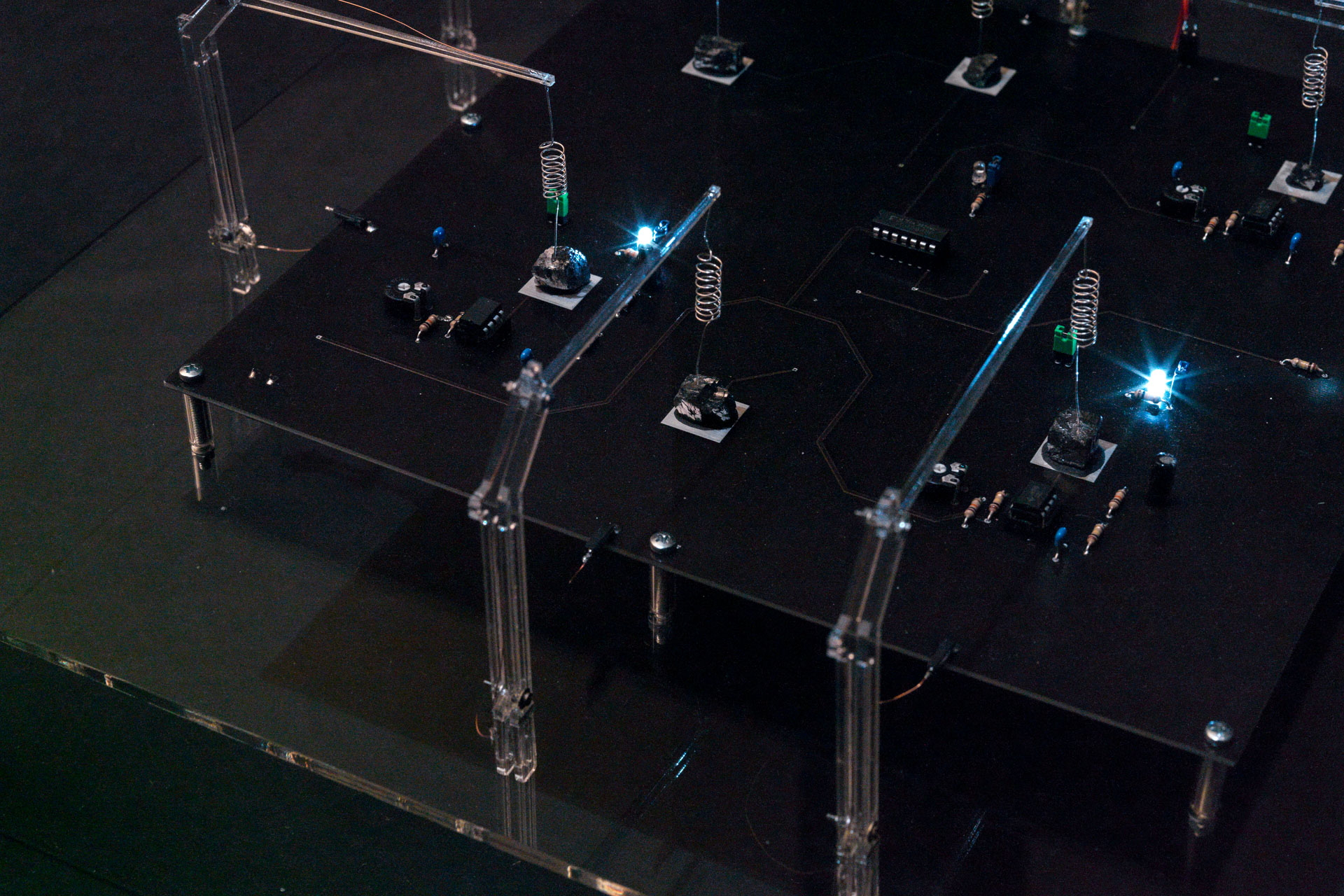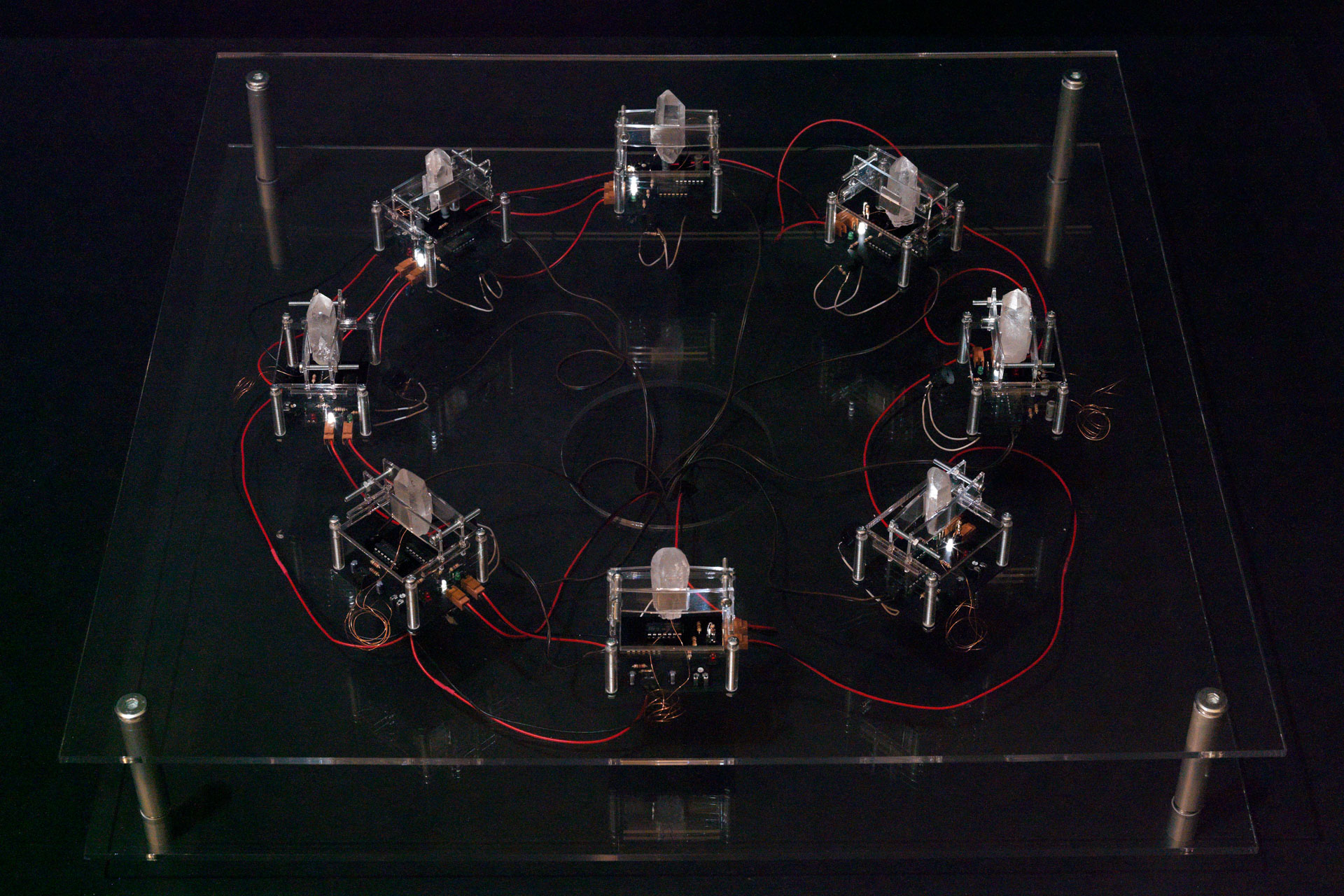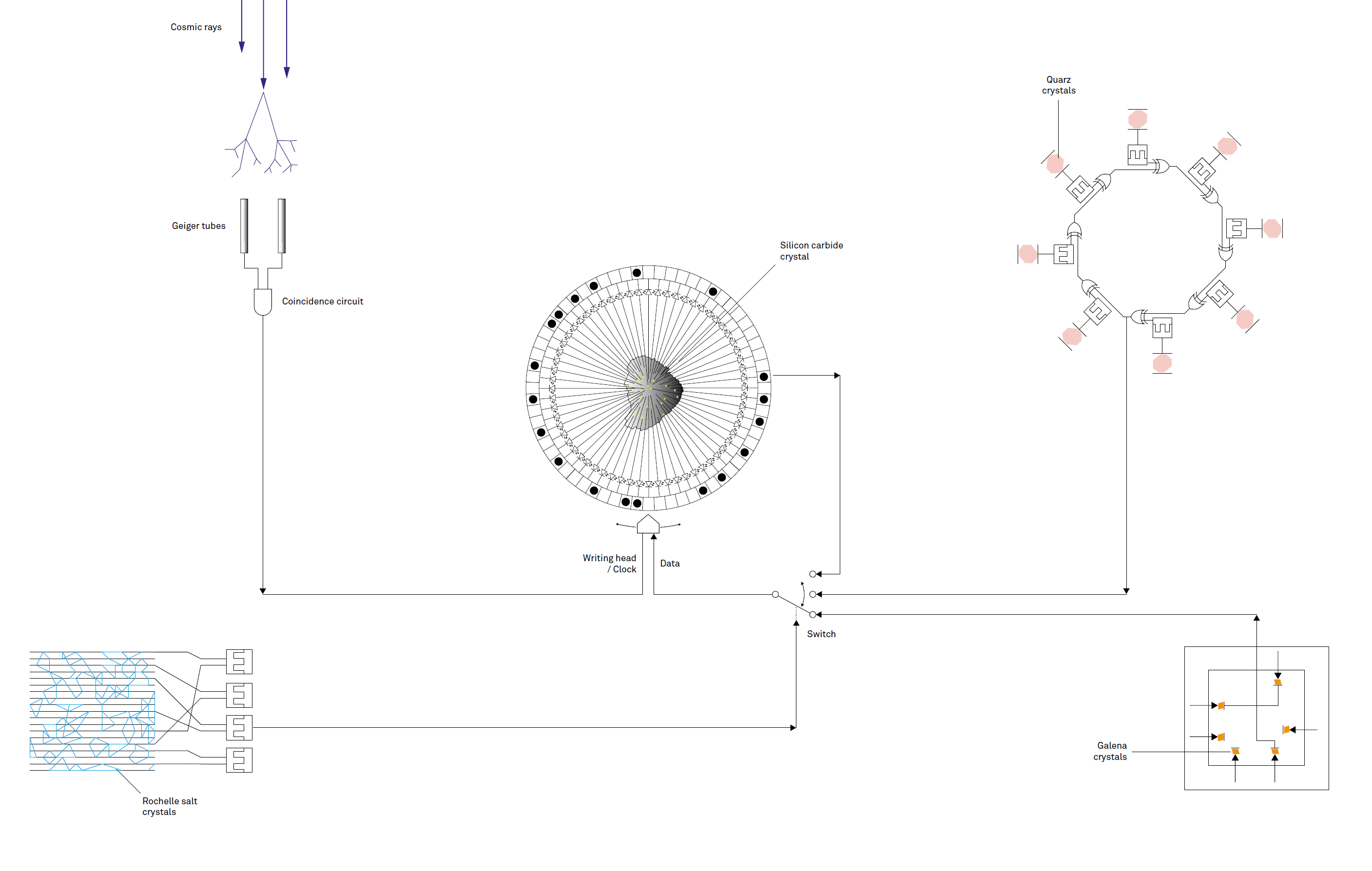Matter feels, converses, suffers, desires, yearns and remembers. — Karen Barad
The exhibition project Irrational Computing is an artistic investigation of the material dimension and aesthetics of digital processes. The basic materials of the information technologies that surround us are semiconducting crystals such as silicon, quartz, or silicon carbide, which—thanks to today’s advanced microtechnology and extremely sophisticated procedures—are processed into transistors or integrated circuits (IC), the materiality of contemporary microprocessors having long since ceased to be tangible. The extreme miniaturization and the black box setup elude visual interpretation. The installation’s circuit runs counter to the developments in information technology, representing the system in a dimension that is enlarged many times over. The project is akin to zooming in very closely on the smallest physical units of digital processes. The installation consists of five interlinked modules that use the varied electrical and mechanical particularities and characteristics of crystals and minerals and, through their networking, form a kind of primitive, macroscopic signal processor. The crystals used for the purpose are either taken directly from nature or industrial waste products, or else have been specially cultivated for the purpose. A silicon carbide crystal, for example, is made to light up at numerous points with the help of electrodes (LED). On the crystal piece, there appears a kind of display, which is targeted by the data flows generated by other modules. At the same time, the crystal functions as a sound generator, since the electrical impulses change the surface of the crystal, causing it to vibrate. These microscopic reverberations are made audible for visitors via loudspeakers. Digital systems, in their functions, are conceived logically and rationally. The lowest physical or electro-technical level (crystals with semiconductor properties) is based, however, on quantum mechanical—that is, statistical or unpredictable—processes. Modern computer technology has thus tamed and domesticated the chaotic, so to speak. Irrational Computing comments on this paradox by examining the aesthetics of the materials from which a global digital network has been developed. The installation is not supposed to function — its aim is to search for the poetic elements at the border between accuracy and chaos.
Silicon carbide, quartz, galena, Rochelle salt, acrylic glass, custom electronics, aluminum profiles
Credits:
Curated by Carsten Seiffarth
Introduction to the exhibition by Dr. Andreas Brockmann
Exhibitions/Performances:
International Triennial of New Media Art 2014 / thingWorld
2014-06-11 - 2014-07-06
National Art Musuem of China, Beijing CN
A Matter of Feeling - META.MORF 2012
2012-09-27 - 2012-10-28
Trondheim Kunstmuseum, Trondheim NOR
synergy - Lexus Hybrid Art
2012-07-18 - 2012-07-29
ARTPLAY, Moscow RU
The Power of Things
2012-05-16 - 2012-06-03
Dutch Electronic Art Festival, Rotterdam NL
The Crystal World / CTM 12
2012-01-27 - 2012-02-19
Kunstraum Kreuzberg/Bethanien, Berlin DE
Irrational Computing (solo)
2011-10-28 – 2011-12-17
Schering Stiftung, Berlin DE
